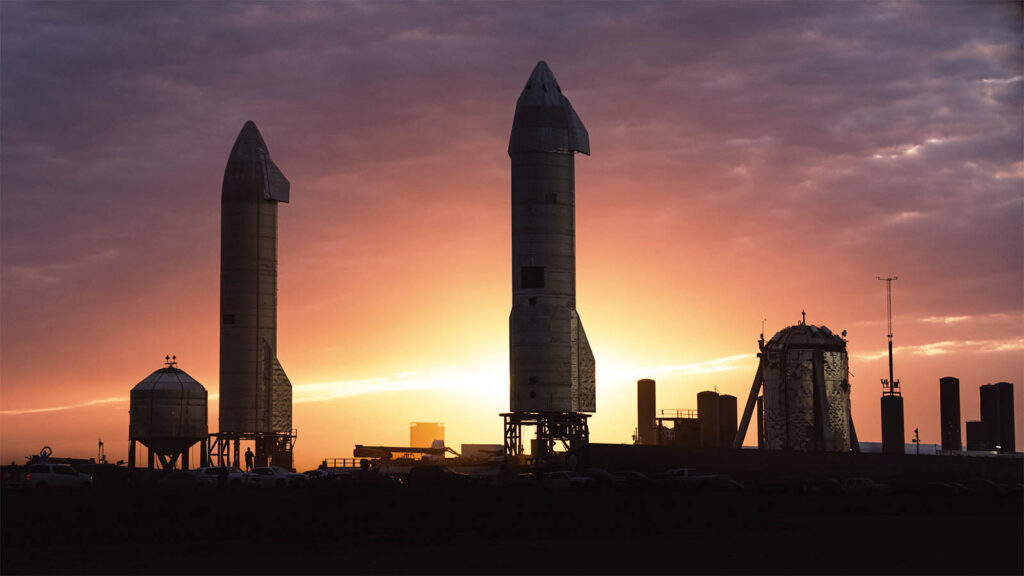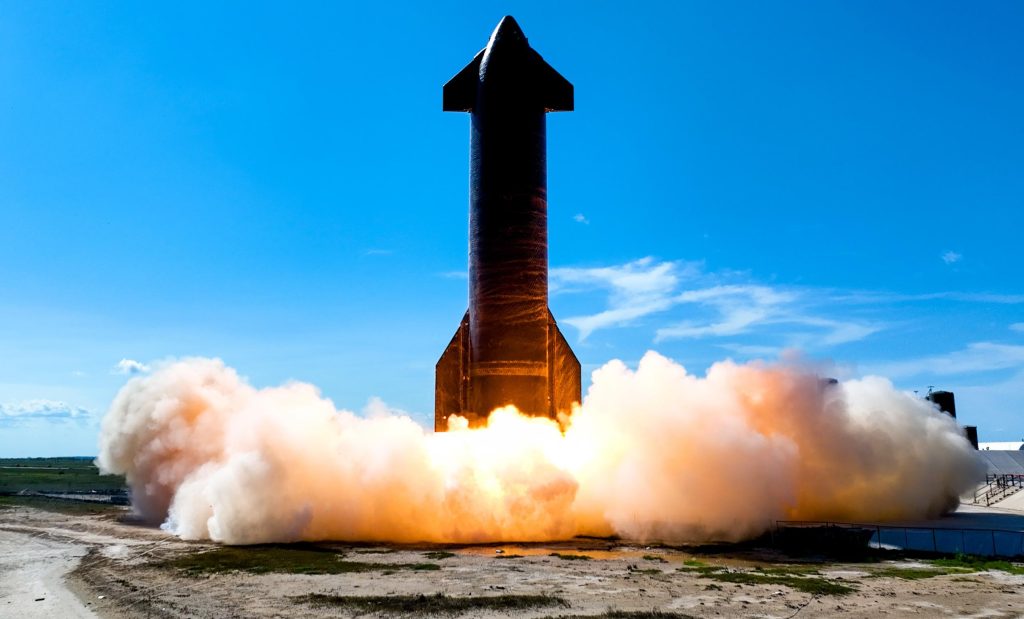SpaceX Starship HLS
Specifications
- Function: Transfer crew from lunar orbit to the surface of the Moon and back.
- Second stage for SpaceX Starship
- Height: 50 m (164 ft)
- Diameter: 9 m (30 ft)
- Propellant mass: 1,200 t (2,650,000 lb)
- Powered by: 3x Raptor engine, 3x Raptor vacuum
- Propellant: Liquid oxygen, Liquid methane
- First stage is: SpaceX Super Heavy Booster
- Remarks: Can land on Earth again
- Challenges: Needs a landing pad on the Moon to avoid too much dust
The Starship Human Landing System (Starship HLS) was the winner selected by NASA for potential use for long-duration crewed lunar landings as part of NASA’s Artemis program.
Starship HLS is a variant of SpaceX’s Starship spacecraft optimized to operate on and around the Moon. In contrast to the Starship spacecraft from which it derives, Starship HLS will never re-enter an atmosphere, so it does not have a heat shield or flight control surfaces. In contrast to other proposed HLS designs that used multiple stages, the entire spacecraft will land on the Moon and will then launch from the Moon. Like other Starship variants, Starship HLS has Raptor engines mounted at the tail as its primary propulsion system. However, when it is within “tens of meters” of the lunar surface during descent and ascent, it will use high-thrust meth/ox RCS thrusters located mid-body instead of the Raptors to avoid raising dust via plume impingement. A solar array located on the nose below the docking port provides electrical power. Elon Musk stated that Starship HLS would be able to deliver “potentially up to 200 tons” to the lunar surface.
Starship HLS would be launched to Earth orbit using the SpaceX Super Heavy booster, and would use a series of tanker spacecraft to refuel the Starship HLS vehicle in Earth orbit for lunar transit and lunar landing operations. Starship HLS would then boost itself to lunar orbit for rendezvous with Orion. In the mission concept, a NASA Orion spacecraft would carry a NASA crew to the lander, where they would depart and descend to the surface of the Moon. After lunar surface operations, Starship HLS would lift off from the lunar surface acting as a single-stage-to-orbit (SSTO) vehicle and return the crew to Orion.
Footnote
- Sources: Aerospace dashboard, SpaceX, funkystuff.org
- Outgoing: NASA
- Keywords:


